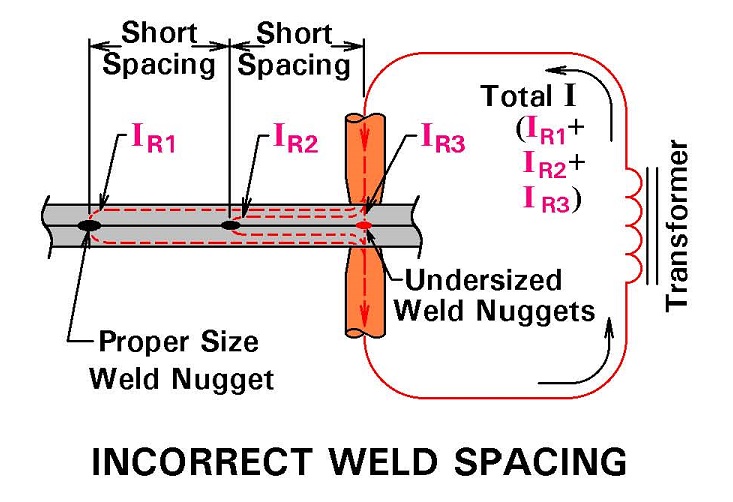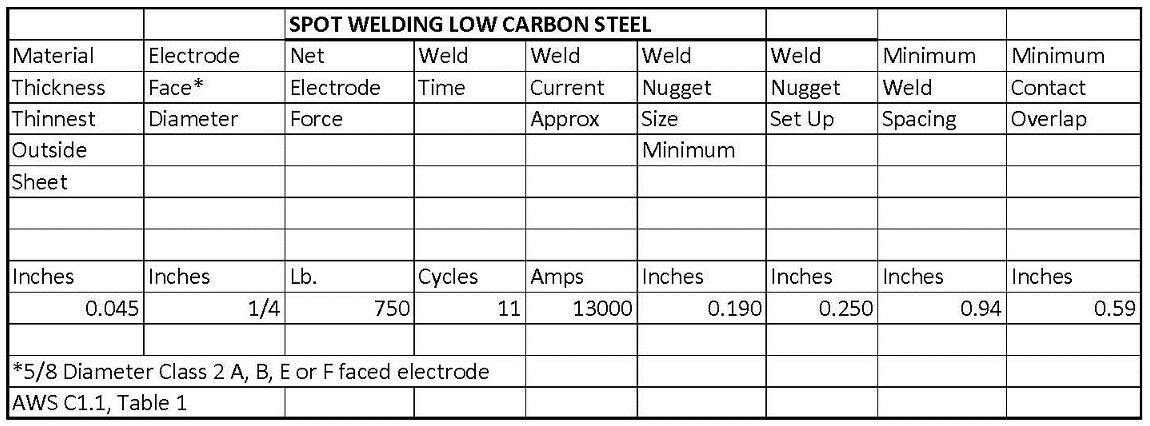Yes, there is a minimum spacing for spot welds listed in most sample weld schedules. If welds are placed too close together, the weld current can flow through/across the sheet of metal between the desired weld and previous weld locations as shown. This current does not flow through the desired weld joint and therefore does not help create a nugget. This is called shunting current. It is wasted energy. In the figure below the first nugget is acceptable the second and third welds get smaller due to the shunting currents shown. The third weld is undersized in this example. The severity of this condition depends upon the material, parts, spacing and weld schedule.

Too correct for this increase the spacing between welds. Highly conductive materials like aluminum need larger spacing’s than more resistive materials like steel.
If design is such that you must make the weld close together then you must use more power to compensate. Unfortunately you are driving all electrical components in the system to higher levels and they will need additional cooling or off time to compensate.
Most published weld schedules list a value for minimum weld spacing between individual welds to minimize current shunting through the first weld.

This spacing will vary by the material and its thickness. Whether you are designing fixed automation or deciding the space between robot welds a minimum spacing must be adhered to for good welding practice.
Related Article:“DO SERIES WELDS HAVE SHUNTING CURRENTS?”
“IS CROSS WIRE WELDING A SERIES WELD?”
References: AWS C1.1 Recomended Practices for Resistance Welding
RWMA - Resistance Welding Manual
CMW Inc. Catalog
Tuffaloy Products Catalog

